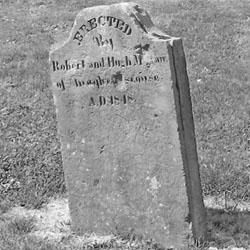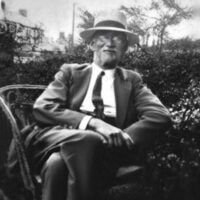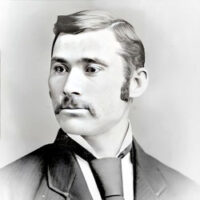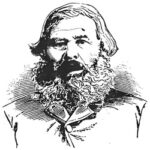In the picturesque county of Down, Ireland, amidst the rolling hills and vibrant landscapes, Robert Megraw Sr. was born around 1782. Little did he know that his life would intertwine with the rich history and events of his homeland. From his humble beginnings to his lasting impact on the community, Robert Megraw Sr. embodied the spirit and resilience of the Irish people. This brief biographical narrative delves into the life of a man who lived, loved, and left an indelible mark on the land he called home.
Early Years and Family
Robert Megraw Sr. spent his entire adult life in the charming village of Magherascouse, nestled in the heart of Co. Down. Though details about his early years are scarce, we can gather that he was a man of steadfast character and enduring determination.
In due course, Robert married Martha Bowman, a woman whose story remains elusive, save for her passing before 1864. Together, Robert and Martha raised a family of six known children, each born within the embrace of their beloved Co. Down. Their names echoed through the generations.
i. Sarah Ann Megraw (born ca. 1818)
ii. John Megraw (born ca. 1819)
iii. James Megraw Sr. (born ca. 1825)
iv. Agnes Megraw (born ca. 1827)
v. Robert Megraw Jr. (born ca. 1830)
vi. Annesley Megraw (born ca. 1833)
Freemasonry and Connections
Beyond his familial responsibilities, Robert Megraw Sr. was an active participant in the social fabric of Co. Down. His involvement with the Freemasonry organization offers a glimpse into his affiliations and commitments. On 22nd June 1815, Robert joined Lodge No. 136 in Ballygowan, Co. Down, fostering connections within the community.
Through the years, Robert’s dedication to Freemasonry manifested in his roles and responsibilities within the organization. On 15th December 1817, he served as a foreman on a committee at Masonic Lodge 136, showcasing his leadership qualities. The following year, Robert was elected as the High Priest of the same lodge on 27th December 1818, signifying his esteemed position within the Masonic community.
Land and Livelihood
Robert had a deep connection to the land of Magherascouse.In 1827, he held a lease from Lord Dufferin for “Fort Hill,” a 25-acre property that would become the cornerstone of his life’s work. Perched atop the site of an ancient rath (ringfort) constructed by Gaelic natives over two thousand years ago during the early Christian period, Robert’s farmhouse commanded sweeping views of the rolling countryside towards Strangford Lough.
An intriguing thread connects Robert even further in the past. Records show a farmer named John Megraw registered a sizable freehold in Magherascouse in 1790, around the time of Robert’s birth. Though their precise kinship remains elusive, one can’t help but wonder if the land’s legacy passed from father to son, an unbroken chain through generations.
Like many of his contemporaries, Robert’s path was not without its challenges. By 1831, unpaid rent amounting to £50 cast a shadow, threatening the very soil he tended. Summoned to court to explain the arrears, Robert faced the looming specter of eviction. Yet, his resilience prevailed – records indicate he found a way to resolve the debt, allowing him to continue nurturing the land he cherished. The 1835 Tithe Valuation, levying £1 5s 4.5p on his property, underscored his obligation to support the Church of Ireland, a responsibility he dutifully upheld.
Trials and Testimonies
In February 1842, Robert Megraw Sr. found himself embroiled in a legal dispute when he accused James Longridge of stealing his potatoes. The trial took place at the Down assizes, and according to the “Downpatrick Recorder” newspaper, Robert’s son, John Megraw, testified that he discovered tracks leading from their house to the prisoner’s house and found similar potatoes in the prisoner’s possession. Another witness, John Scott, confirmed the similitaries between the stolen potatoes and the ones found in the prisoner’s house.
Thomas Gourley, the landlord of James Longridge, also played a crucial role in the case. He came down to the scene when called upon and witnessed the search for the missing potatoes. It was Thomas Gourley who suggested examining under some hay and sticks, leading to the discovery of the concealed prisoner. James Longridge’s attempt to explain his possession of the potatoes did not provide a satisfactory answer to the witnesses.
In light of the compelling evidence presented, the court reached a verdict of guilty, sentencing James Longridge to three months of hard labor.
Legacy and Final Days
As the years unfolded, Robert continued his connection with the land, as evidenced by the Griffiths Valuation of 1863. Leasing two properties from Lord Dufferin and Claneboye, Robert’s commitment to his ancestral home remained steadfast. These properties, spanning from a small house and offices to extensive acres of land, bore witness to his dedication and resilience.
In the spring of 1864, Robert Sr. became ill and died of pneumonia six months later on a Monday. His remains lie beneath a weathered headstone standing on the grounds of St. Mary’s Church of Ireland in Comber, Co. Down. The inscription etched into the pitted face of the stone’s surface reads simply: “Erected by Robert and Hugh M(eg)raw of Magherascouse, A.D. 1848.” It is believed that Hugh is a brother of Robert.
Two days prior to his death, on 17th September 1864, Robert Megraw Sr. penned his final testament in Belfast. Ensuring the legacy of his hard work and devotion, he named his son Robert Jr. and nephew John Bowman as executors of his estate. The indomitable spirit that guided his life now flowed through the veins of his descendants, forever entwined with the history of Co. Down.
Funeral and Masonic Traditions
On the day of Robert Megraw Sr.’s funeral, Masonic traditions would have been observed. Neighboring lodges received invitations, and the brethren gathered at Robert’s house for a brief service before accompanying the coffin to the cemetery.
Following 19th-century Masonic customs, the funeral corteges were led by the “musik,” with muffled drums, pipes, or fifes. Knights Templars and other orders, possibly on horseback and wearing regalia, participated. Deacons ensured order, keeping non-Masons at a distance.
At the graveside, after the burial service, the Masters and High Priests formed the inner circle, while the rank and file formed the outer circle. The general public stood behind. The brethren clasped hands, offering a “sign of distress” thrice. They then reverently placed sprays of “yew” or “palm” on the coffin, paying their final respects to Robert.
As the funeral concluded, a hushed solemnity fell over the gathering, with echoes of respect and gratitude lingering in the air, honoring their departed fellow lodge member.
Final Reflections
Robert Megraw Sr. was a man deeply rooted in the land of Co. Down, Ireland. From his involvement in Freemasonry to his connection to the land and his enduring resilience, Robert’s life reflected the spirit of the Irish people. Through his trials and testimonies, he demonstrated his determination to protect his property and seek justice. His legacy lives on through his descendants, who carry his name and the indomitable spirit of their ancestor.
As the sun sets over the verdant fields of Magherascouse, Robert’s story remains etched in the annals of Co. Down’s history, a testament to the strength of character and the enduring legacy of those who shaped the land they called home.




